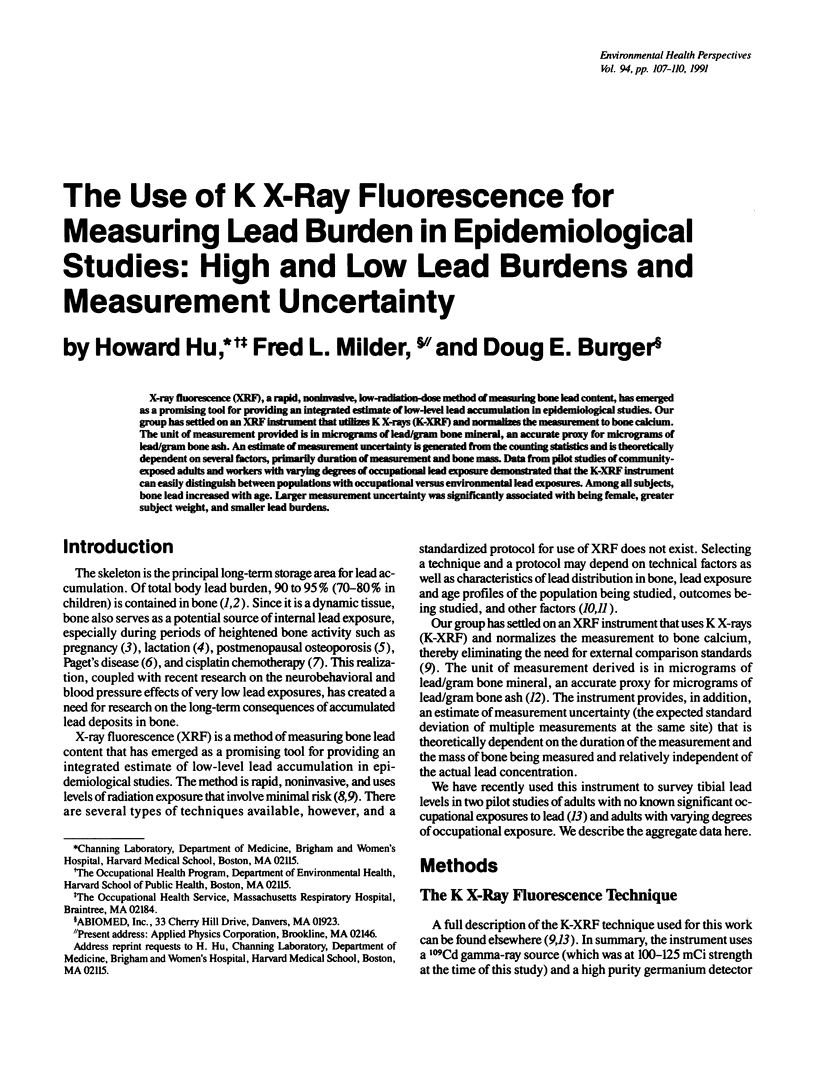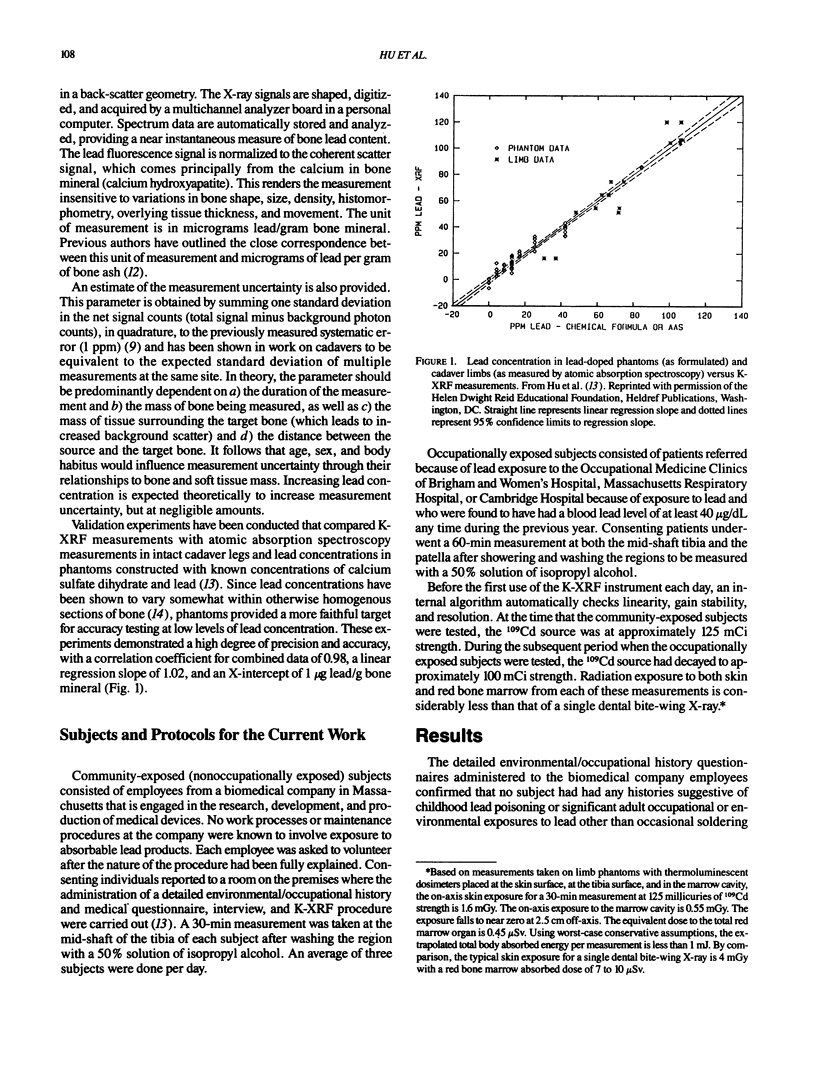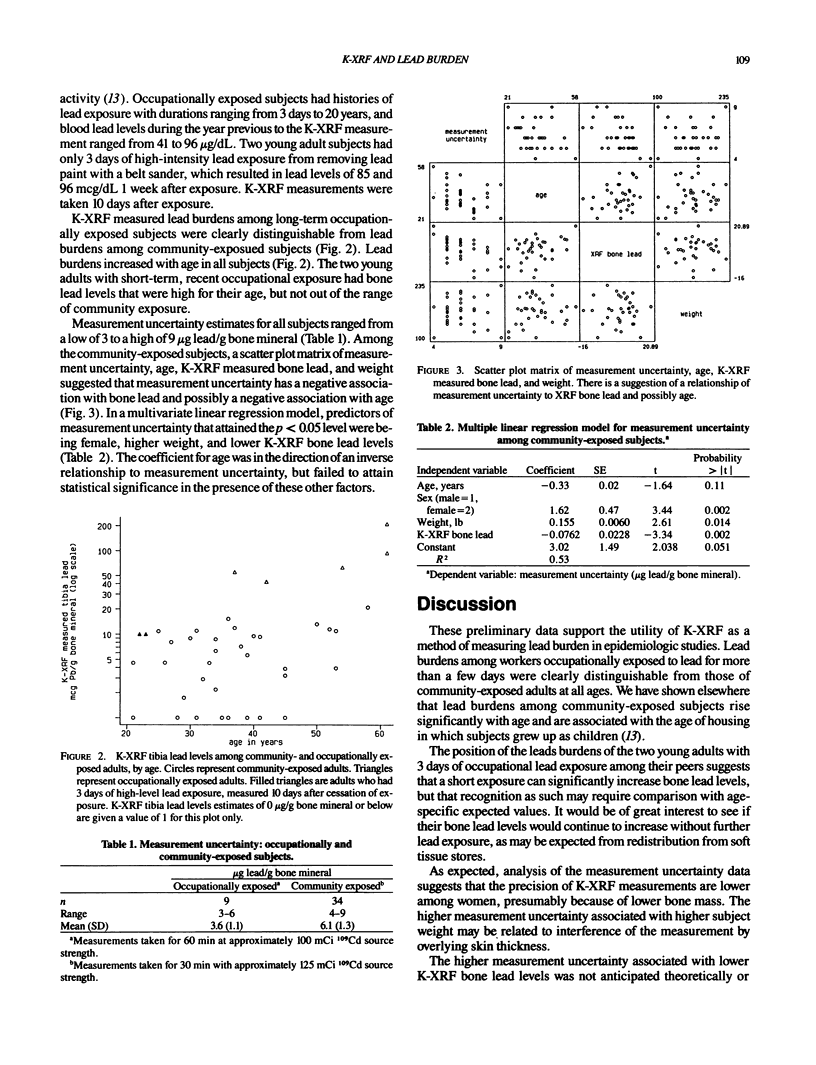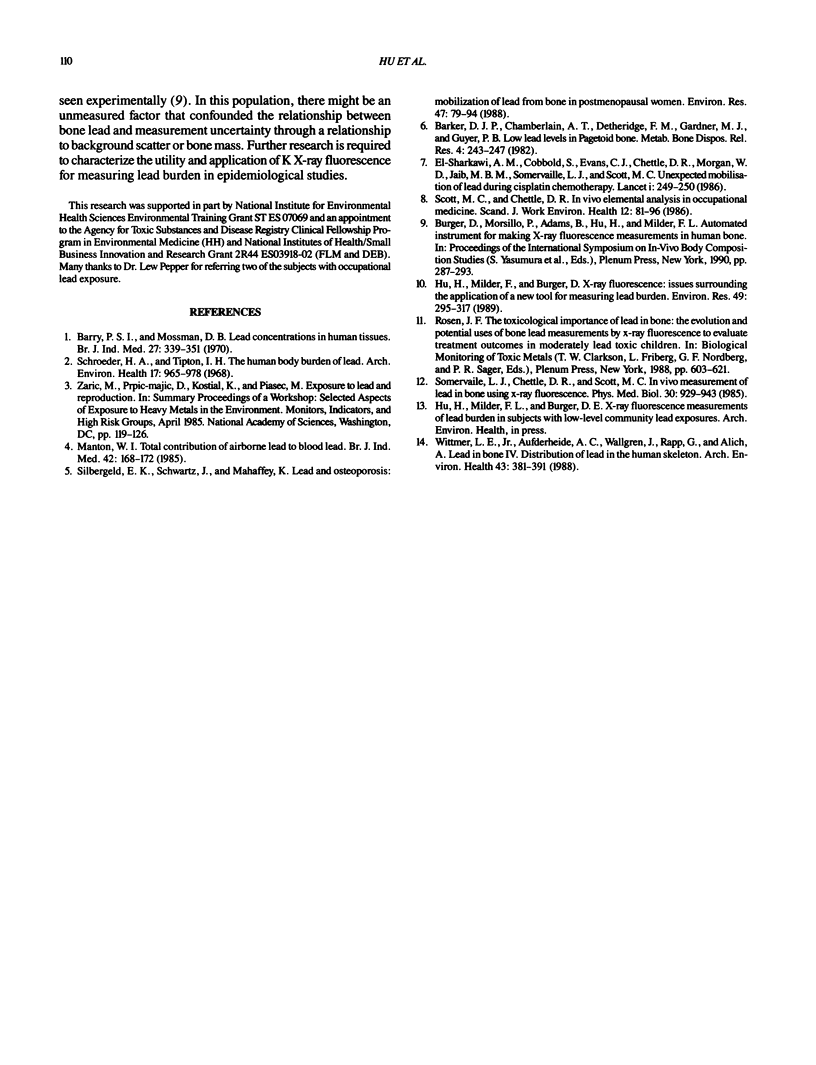Abstract
X-ray fluorescence (XRF), a rapid, noninvasive, low-radiation-dose method of measuring bone lead content, has emerged as a promising tool for providing an integrated estimate of low-level lead accumulation in epidemiological studies. Our group has settled on an XRF instrument that utilizes K X-rays (K-XRF) and normalizes the measurement to bone calcium. The unit of measurement provided is in micrograms of lead/gram bone mineral, an accurate proxy for micrograms of lead/gram bone ash. An estimate of measurement uncertainty is generated from the counting statistics and is theoretically dependent on several factors, primarily duration of measurement and bone mass. Data from pilot studies of community-exposed adults and workers with varying degrees of occupational lead exposure demonstrated that the K-XRF instrument can easily distinguish between populations with occupational versus environmental lead exposures. Among all subjects, bone lead increased with age. Larger measurement uncertainty was significantly associated with being female, greater subject weight, and smaller lead burdens.
Full text
PDF



Selected References
These references are in PubMed. This may not be the complete list of references from this article.
- Barker D. J., Chamberlain A. T., Detheridge F. M., Gardner M. J., Guyer P. B. Low lead levels in pagetoid bone. Metab Bone Dis Relat Res. 1982;4(4):243–247. doi: 10.1016/0221-8747(82)90034-0. [DOI] [PubMed] [Google Scholar]
- Barry P. S., Mossman D. B. Lead concentrations in human tissues. Br J Ind Med. 1970 Oct;27(4):339–351. doi: 10.1136/oem.27.4.339. [DOI] [PMC free article] [PubMed] [Google Scholar]
- Hu H., Milder F. L., Burger D. E. X-ray fluorescence: issues surrounding the application of a new tool for measuring burden of lead. Environ Res. 1989 Aug;49(2):295–317. doi: 10.1016/s0013-9351(89)80074-x. [DOI] [PubMed] [Google Scholar]
- Manton W. I. Total contribution of airborne lead to blood lead. Br J Ind Med. 1985 Mar;42(3):168–172. doi: 10.1136/oem.42.3.168. [DOI] [PMC free article] [PubMed] [Google Scholar]
- Schroeder H. A., Tipton I. H. The human body burden of lead. Arch Environ Health. 1968 Dec;17(6):965–978. doi: 10.1080/00039896.1968.10665354. [DOI] [PubMed] [Google Scholar]
- Scott M. C., Chettle D. R. In vivo elemental analysis in occupational medicine. Scand J Work Environ Health. 1986 Apr;12(2):81–96. doi: 10.5271/sjweh.2162. [DOI] [PubMed] [Google Scholar]
- Silbergeld E. K., Schwartz J., Mahaffey K. Lead and osteoporosis: mobilization of lead from bone in postmenopausal women. Environ Res. 1988 Oct;47(1):79–94. doi: 10.1016/s0013-9351(88)80023-9. [DOI] [PubMed] [Google Scholar]
- Somervaille L. J., Chettle D. R., Scott M. C. In vivo measurement of lead in bone using x-ray fluorescence. Phys Med Biol. 1985 Sep;30(9):929–943. doi: 10.1088/0031-9155/30/9/005. [DOI] [PubMed] [Google Scholar]
- Wittmers L. E., Jr, Aufderheide A. C., Wallgren J., Rapp G., Jr, Alich A. Lead in bone. IV. Distribution of lead in the human skeleton. Arch Environ Health. 1988 Nov-Dec;43(6):381–391. doi: 10.1080/00039896.1988.9935855. [DOI] [PubMed] [Google Scholar]
- el-Sharkawi A. M., Morgan W. D., Cobbold S., Jaib M. B., Evans C. J., Somervaille L. J., Chettle D. R., Scott M. C. Unexpected mobilisation of lead during cisplatin chemotherapy. Lancet. 1986 Aug 2;2(8501):249–250. doi: 10.1016/s0140-6736(86)92072-6. [DOI] [PubMed] [Google Scholar]


